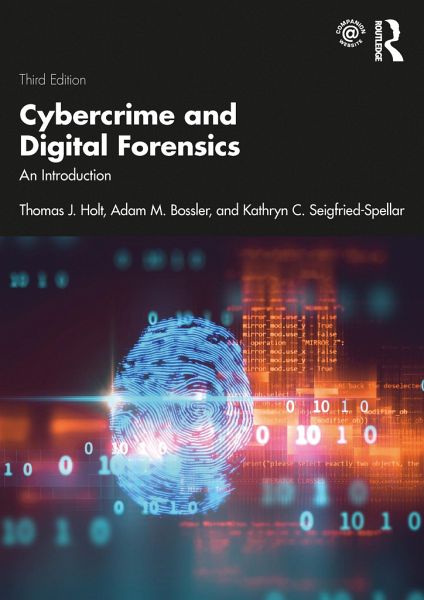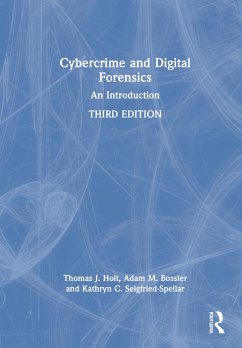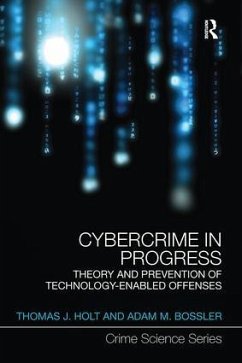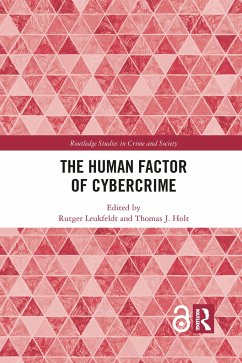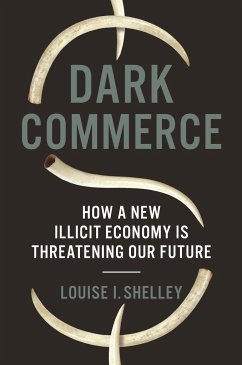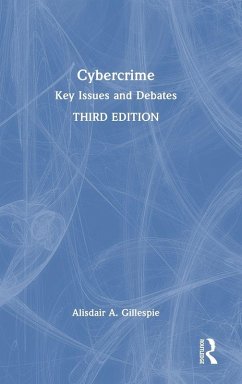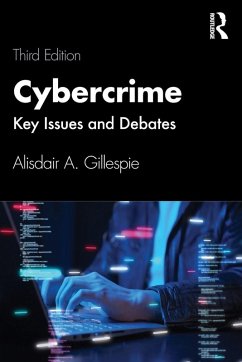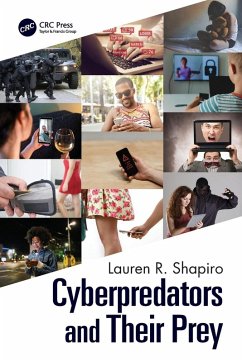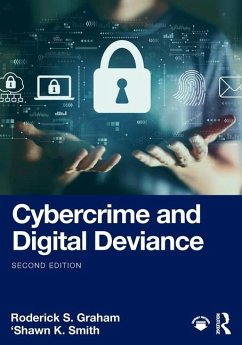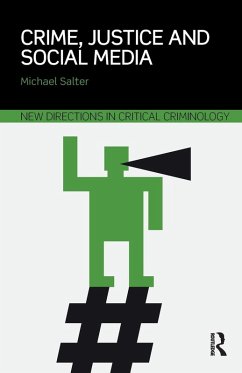Cybercrime and Digital Forensics
An Introduction
Versandkostenfrei!
Versandfertig in 1-2 Wochen
Weitere Ausgaben:

PAYBACK Punkte
54 °P sammeln!




This book provides an authoritative synthesis of the disparate literature on the various types of cybercrime, the global investigation and detection of cybercrime and the role of digital information, and the wider role of technology as a facilitator for social relationships between deviants and criminals.
Thomas J. Holt is Professor in the School of Criminal Justice at Michigan State University. His research focuses on all forms of cybercrime and the police response to these offenses. Dr. Holt's work has appeared in outlets such as British Journal of Criminology, Crime & Delinquency, and Terrorism & Political Violence. His research has been funded by the Australian Research Council, the Department of Homeland Security, the National Institute of Justice, and the National Science Foundation. Adam M. Bossler is Professor and Chair of the Department of Criminal Justice and Criminology at Georgia Southern University. His research interests focus on the applicability of criminological theories to cybercrime offending and victimization and the law enforcement response to cybercrime. His research has been funded by the Department of Justice, National Science Foundation, and United Kingdom Home Office. He has co-authored three books, co-edited the Palgrave Handbook of International Cybercrime and Cyberdeviance, and written for various peer-reviewed journals, including Criminology & Public Policy, Policing, International Journal of Offender Therapy and Comparative Criminology, Journal of Criminal Justice, and Deviant Behavior. In addition to being a co-founder of ancient astronaut criminology, he is also a member of the American Society of Criminology Division of Cybercrime, the International Interdisciplinary Research Consortium on Cybercrime (IIRCC), and the European Society of Criminology's Working Group on Cybercrime. Kathryn C. Seigfried-Spellar is Associate Professor in the Cyberforensics program in the Department of Computer and Information Technology (CIT) at Purdue University. She is a member of the Tippecanoe High Tech Crime Unit and has Special Deputy status for the Tippecanoe County Prosecutor's Office. Dr. Seigfried-Spellar's primary research area of interest is the personality characteristics and socio-legal factors associated with cyberdeviance, specifically internet crimes against children. Dr. Seigfried-Spellar has published in the area of digital forensics, specifically the ability to conduct a behavioral analysis of digital forensic evidence from child pornography investigations. She is a Fellow of the Digital and Multimedia Sciences section of the American Academy of Forensic Sciences (AAFS), member of the American Psychological Association (APA), and member of the International Association of Law Enforcement Intelligence Analysts (IALEIA).
Produktdetails
- Verlag: Taylor & Francis Ltd
- 3 ed
- Seitenzahl: 814
- Erscheinungstermin: 31. Mai 2022
- Englisch
- Abmessung: 244mm x 170mm x 44mm
- Gewicht: 1602g
- ISBN-13: 9780367360078
- ISBN-10: 0367360071
- Artikelnr.: 62846933
Herstellerkennzeichnung
Libri GmbH
Europaallee 1
36244 Bad Hersfeld
gpsr@libri.de
Für dieses Produkt wurde noch keine Bewertung abgegeben. Wir würden uns sehr freuen, wenn du die erste Bewertung schreibst!
Eine Bewertung schreiben
Eine Bewertung schreiben
Andere Kunden interessierten sich für



